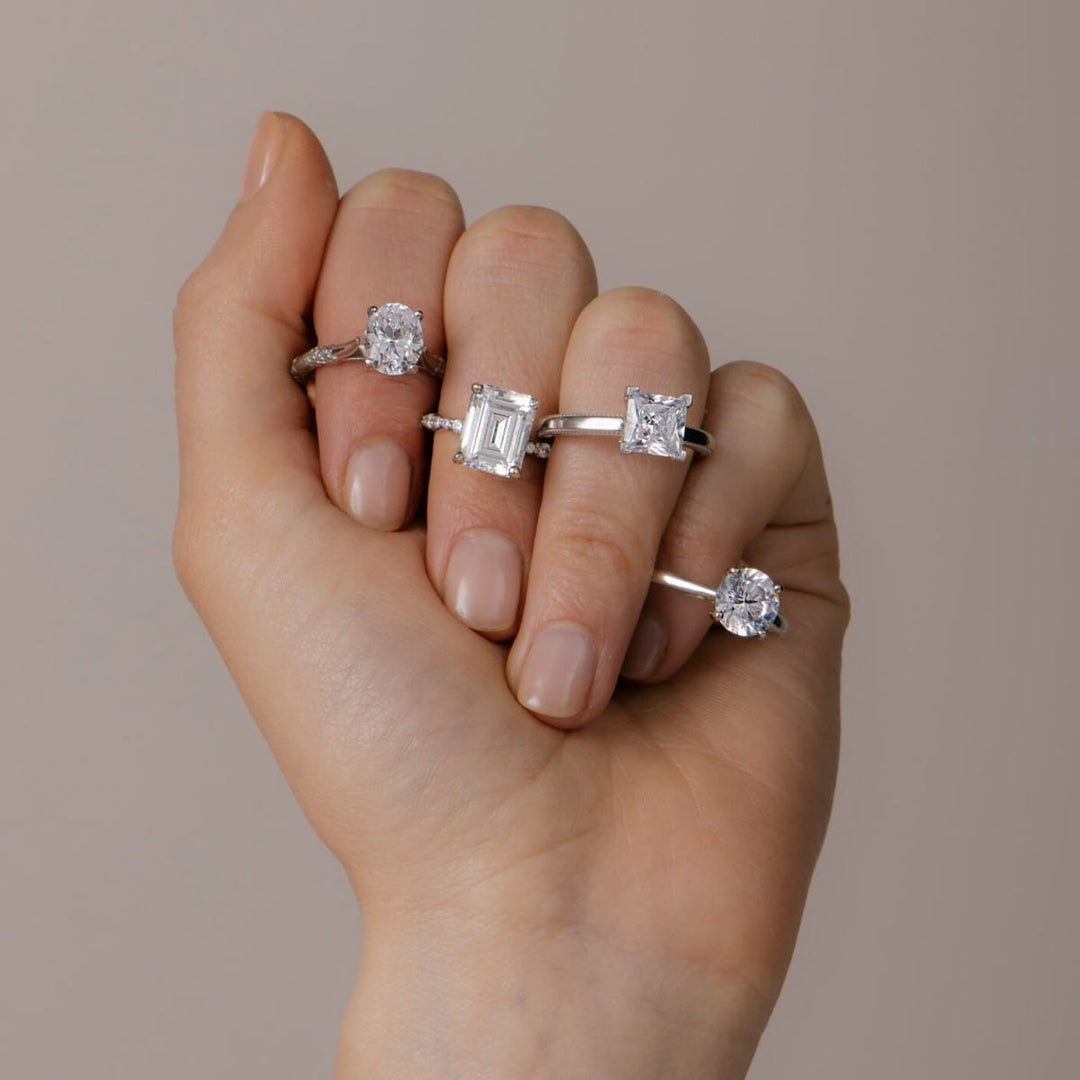Diamond Clarity

WHAT IS THE SIGNIFICANCE OF A DIAMOND'S CLARITY?
The clarity of a diamond represents the evaluation of small imperfections on the
Keep in mind that no diamond is entirely pure. They are manufactured underground and undergo tremendous pressure and heat. Natural inclusions are therefore inevitable.
In most cases, the beauty of a diamond is not affected in any way by inclusions because they are, for the most part, invisible to the naked eye.
Remember that while not all diamonds are perfect, all diamonds are unique.
THE 5 CATEGORIES OF CLARITY
1. FL/IF: FLAWLESS
These diamonds do not have any inclusions that are visible under a 10x magnifying glass and are considered pure, flawless.
Some small surface defects may be visible under the microscope only on IF diamonds.
Less than one percent of all diamonds are of FL clarity.
An absolutely pure diamond is incredibly rare, as it is almost impossible to find a 100% inclusion-free diamond.
2. VVS1/VVS2: VERY VERY SLIGHTLY INCLUDED
A microscope is needed to detect VVS diamonds, which have tiny inclusions that are difficult to detect with a 10x magnifying glass even for the trained eye.
VVS clarity is one of the rarest diamonds and results in a pure appearance to the eye.
3. VS1/VS2: VERY SLIGHTLY INCLUDED
These diamonds have minor inclusions that can only be seen with a magnifying glass under 10 x magnifications, unlike the VVS clarity, which requires the use of a microscope.
However, it remains tiny and will never be visible to the naked eye.
4. SI1/SI2: SLIGHTLY INCLUDED
Inclusions are visible under x10 magnification and generally invisible to the naked eye.
However, some SI2 inclusions may be detectable by a trained eye, depending on the intensity and location of the inclusion.
If they are pure to the eye, SI diamonds often represent the best value for money.
5. I1/I2/I3: INCLUSIONS
These diamonds contain inclusions that are visible to the naked eye, although they are less obvious on the I1 clarity.
Heavily included diamonds sometimes exhibit poor clarity and lack of brilliance due to the excessive presence of inclusions.
Despite these imperfections, these diamonds also find buyers because they have the advantage of being very affordable in terms of price.







